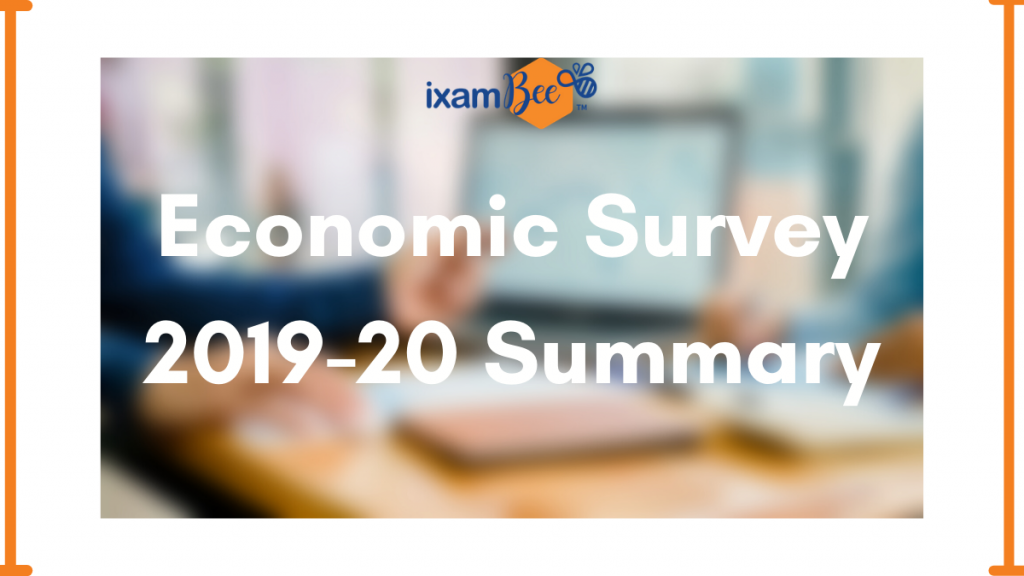The Economic Survey 2019-20 was released by Chief Economic Adviser Krishnamurthy V Subramanian on January 31, 2020. The Economic Survey is a lengthy document in two volumes covering the overall economic growth made in the previous fiscal year and also set the path for the Union Budget for the upcoming year.
Economic Survey 2019-2020 report is a very important document to be studied for major competitive exams, especially RBI Grade B , NABARD Grade A, NABARD Grade B, SEBI Grade A and other Banking exams. NABARD Grade A, RBI Assistant exams are not very far, therefore having through knowledge of important aspects from this document is very essential for all upcoming competitive exams.
Let us first understand what Economic Survey is?
Economic Survey of India is the flagship annual document of the Ministry of Finance, Government of India, presenting the Ministry’s view on the state of the nation’s economy, in the Parliament every year, one day before the Union Budget. It is prepared under the guidance of the Chief Economic Adviser of India and reviews the developments in the Indian economy over the past financial year, summarizes the performance on major development programs, and highlights the policy initiatives of the government and the prospects of the economy in the short to medium term.
Let us understand why it is important to study Economic Survey:
1. These documents will make the picture of the entire economy clear to you. Most of your ESI concept based questions are done if you understand the Economic Survey well.
2. There are chapters like State of the Economy, Fiscal Development, Balance of Payment, Monetary Management, Financial Intermediation (Banking and NBFC) and Inflation which are very important from exam point of view.
3. Volume 1 consists of analysis, observations and recommendations about Indian Economy. Also, understanding of these topics will help you in essay writing in the Descriptive exam and in the interview.
How to study Economic Survey:
1. Don’t’ mug up the data and numbers. Most of the data in the survey is not the latest. Say for example the survey mentions the RBI decreased Repo Rate by 110 basis points (page 1 Vol 2) while the total rate cut is 135 basis points. By the time you appear in the exam the data on economic growth, repo rate, foreign exchange, FDI, FPI, NPA etc changes. Therefore this document is more to understand about the important things in Indian Economy.
2. Don’t read everything – There are chapters like State of the Economy, Fiscal Development, Balance of Payment, Monetary Management, Financial Intermediation (Banking and NBFC) and Inflation which are most important. In these chapters as well, pay attention only to the details which are more significant for the national economy. There is a lot of microdata and analysis, so you have to be selective in your study.
3. Don’t depend on just chapter summary – This is the mistake many of you will tend to do. Chapter summary will not make you understand the affairs of the Indian economy. Understanding the interconnectedness of the factors like inflation, money supply, exchange rates, foreign investments, consumer demand and product supply on their impact on growth is the outcome of studying the Economic Survey.
Download the most comprehensive and exam relevant summary of Economic Survey of India (2019-20) (VOLUME 1)
This Summary of Economic Survey PDF is to be studied with the following video explanation of the concepts and answer explanations:
“** VOLUME 2 of the Economic Survey is available in our Online Courses only. To know more about the courses, Click Here
Get Free Online Test Series, GK updates in form of Beepedia, as well as latest updates for Bank PO, Bank Clerk, SSC, RBI, NABARD and Other Government Jobs.
